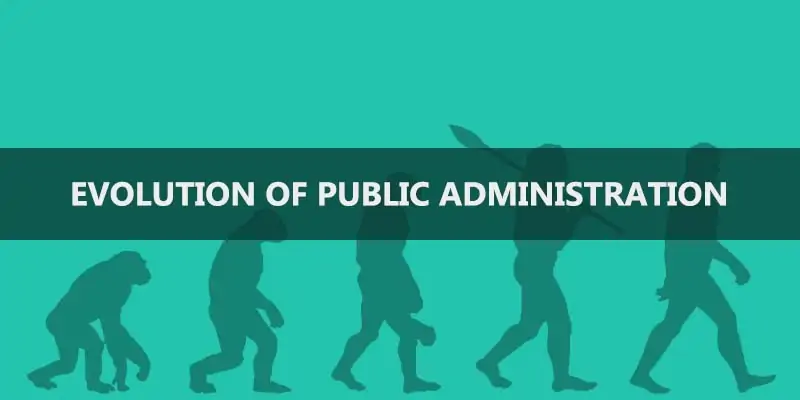Discuss the critical stages of the evolution of public administration.

List of critical stages of the evolution of public administration.
First Stage of Public Administration Evolution.
This can be called the era of politics administration dichotomy. Functionally, administration was separated from politics. It was argued that administration is concerned with implementation of policy decision taken politically. Frank Good now’s “Politics and Administration” sought to conceptually distinguish the two functions.
According to him, Politics has to do with policies or expression of the state will. Administration has to do with the execution of these policies. Apart from this, the institutional locations of these two functions were differentiated.
The location of politics was identified as the legislature and the higher echelons of Government, while the location of administration was identified as the executive min of Government the bureaucracy.
Second Stage of Public Administration Evolution.
The second stage of evolution is marked by the tendency to reinforce the idea of politics administration dichotomy and to evolve a value-free science of management. The public aspect of public administration was dropped at this stage and the focus was almost wholly on efficiency.
The central belief of this period was that there are certain principles of administration which was the task of scholars to discover and advocate. Willoughby, Mooney and Reiley, Follett, Fayol, Gulick and Urwick were among the scholars who ushered an upsurge of interest in this new theme.
Also read | Explain Public Administration as a Social Science
So, while the earlier emphasis on the dichotomy of politics and administration was retained in the second stage of evolution, the techniques of study shifted from legal to scientific forms (e.g work flow studies, time and motion studies, organizational charts, etc.).
Empirical studies were undertaken to find a scientifically accurate method of organizing human relationships in large scale organizations the one best way to achieve a desirable level of organizational efficiency and economy. Luther and Gulick coined the word POSDCORB to promote these principles.
Third Stage of Public Administration Evolution.
This stage began with a reaction against this mechanical approach. The so called principles of administration were challenged as naturalistic fallacies and proverbs. Meanwhile scientific management was also undergoing a humanizing process in response to societal needs and forces.
The famous Hawthorne experiments in late 1920’s carried by a group of scholars at the Hawthorne plant of Western Electric Company, focused upon work groups, demonstrating the powerful influence of social and psychological factors on the workers output.
It drew attention to the effect of informal organization in the formal setup, phenomenon of leadership and influence, impact of Conflicts and cooperation among groups. It revealed the vital importance of human relations in an organization.
Fourth Stage of Public Administration Evolution.
The fourth stage was ushered in by two significant publications in the 40’s Simon’s Administrative Behavior and Robert Dahl’s essay entitled: The Science of Administration Three Problems. Simon’s approach widened the scope of the subject by relating it to psychology, sociology, economics and political science.
Simon rejected classical principles and politics administration dichotomy and argued that all administration revolves around rationality and decision-making. He identified two mutually supportive streams of thought.
Also read | New Public Management Reforms
One was engaged in the development of pure science of administration and the other concerned with normative aspects of administration and prescription for public policy. He favored the coexistence of both.
Dahl identified three issues in the evolution of public administration. First, it is impossible to exclude normative considerations from public administration. Value permeate administration while science is value free.
Second, study of administration should include a study of human behaviour. Third, there is a tendency to enunciate universal principles based on few examples from national and historical settings.
Fifth Stage of Public Administration Evolution.
It was marked by efforts to build a new and theoretically rigorous science of administration. Administration came to be viewed increasingly as a unit in the process of continuous interaction between the people inside and outside the organization at any given period of time.
The last organizational goals must be considered in combination with other equally legitimate aims of all groups concerned. Secondly, public and private administration tended to merge into a single science of organization.
New insights in administration came from management and cybernetic theories. Thirdly, increasing use of systems and behavioral approaches encouraged the comparative study of administrative systems, in diverse social settings and environments.
Also read | Different Approaches to Comparative Public Administration.
New perspectives were needed for the study of comparative public administration and development administration, came from great power competition and international humanitarianism. T.W. Riggs pioneered a new administrative vocabulary to describe different societal typologies, administrative culture and system.
Fourthly, with the ushering in of the computer age, attempts were made to understand the decision-making and problem solving processes of human mind with the help of computer and other mechanical aids. With increasing scientific and technical knowledge at his disposal man will come to possess more political power of control over his fellow human beings.
Final Stage of Public Administration Evolution.
The final stage of the evolution of public administration coincides with a general concern in the social sciences for public policy analysis. This approach was-built upon two basic themes:
- The interpretation of politics and administration at many levels, and
- The programmatic character of all administration.
These themes directed attention in public administration towards political or policy-making processes and specific public programs.
You May Like It





